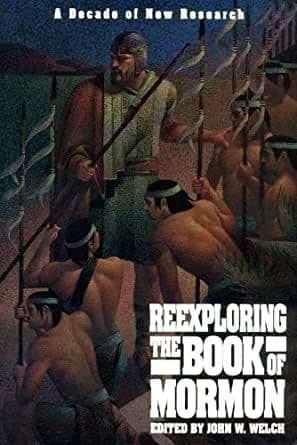Book
85 Chapters

Abstract
Nephi’s prophecy revealed Seantum as his brother’s murderer. Though there were no witnesses, his confession and bloodstained cloak provided enough evidence for conviction under ancient law.Helaman 9:38 “And he was brought to prove that he himself was the very murderer.”
The trial of Seantum in Helaman 7-8 raises some interesting points of Nephite and Israelite law. The story is familiar, how Nephi spoke from his garden tower (see Helaman 7:10), was threatened with a lawsuit for reviling against the government, but in the end revealed that the chief judge was “murdered, and he [lay] in his blood; and he [had] been murdered by his brother, who [sought] to sit in the judgment-seat” (Helaman 8:27). Five men ran and found things to be as Nephi had said.
A public proclamation was then sent out by heralds announcing the murder and calling a day of fasting, mourning, and burial (see Helaman 9:10). The day after the death of a political leader was traditionally a day of fasting, mourning, and burial (see 1 Samuel 31:13; 2 Samuel 1:12).
Following the burial, five suspects (the men who had been sent to investigate) were brought to the judges. They could not be convicted, however, on circumstantial evidence, for such was ruled out under Israelite law, which required every fact to be substantiated by the testimony of two eyewitnesses (see Deuteronomy 19:15). This presented a serious problem in this particular case, however, for no one had witnessed the killing of the chief judge. Seantum had killed his brother “by a garb of secrecy” (Helaman 9:6).
Cases of unwitnessed murders presented special problems under the law of Moses. While the two-witness rule would seem to stand insurmountably in the way of ever obtaining a conviction in such cases, such slayings could not simply be ignored. If a person was found slain in the land and the murderer could not be found, solemn rituals, oaths of innocence, and special purification of all the men in the village had to be performed (see Deuteronomy 21:1-9). Things turned out differently in Seantum’s case, however, for he was soon exposed in a way that opened the door to an exceptional rule of evidence that justified his conviction.
Nephi first revealed to the people that Seantum was the murderer, that they would find blood on the skirts of his cloak, and that he would say certain things to them when they told him, “We know that thou are guilty” (Helaman 9:34). Indeed, Seantum was soon detected and immediately confessed his guilt (see Helaman 9:37-38).
Seantum’s self-incriminating admission would normally not be admissible in a Jewish court of law. Under the Talmud, no man could be put to death on his own testimony: “No man may call himself a wrongdoer,” especially in a capital case.1 But from earlier times came four episodes that gave rise to an exception to this rule against self-incriminating confessions under certain circumstances. Those precedents, each of which involved convictions or punishments based on confessions, were the executions of (1) Aachan (see Joshua 7), of (2) the man who admitted that he had killed Saul (see 2 Samuel 1:10-16), and of (3) the two assassins of Ishbosheth, the son of Saul (see 2 Samuel 4:8-12), as well as (4) the voluntary confession of Micah, the son who stole from his mother (see Judges 17:1-4).
The ancients reconciled these four cases with their rigid two-witness rule by explaining that they involved confessions before trial or were proceedings before kings or rulers instead of judges.2 An exception was especially granted when the confession was “corroborated by an ordeal as well as by the production of the corpus delicti,”3 as in the case of Aachan, who was detected by the casting of lots and whose confession was corroborated by the finding of the illegal goods under his tent floor.
Thus, one can with reasonable confidence conclude that in the biblical period the normal two-witness rule could be overridden in the special case of a self-incriminating confession, if the confession occurred outside of court, or if God’s will was evidenced in the matter by ordeal, lots, or otherwise in the detection of the offender, and if corroborating physical evidence of the crime could be produced.
Seantum’s self-incriminating confession satisfies all three of these requirements precisely, and thus his conviction was ensured. His confession was spontaneous and before trial. The evidence of God’s will was supplied through Nephi’s prophecy. Tangible evidence was present in the blood found on Seantum’s cloak. These factors, under biblical law, would override the normal Jewish concerns about the use of self-incriminating confessions to obtain a conviction.
Given the complicated and important ancient legal issues presented by the case of Seantum, it is little wonder that the text makes special note of the fact that Seantum himself was legitimately “brought to prove that he himself was the very murderer” (Helaman 9:38). No further evidence was legally needed to convict him under these circumstances.
Based on research by John W. Welch, February 1990.
Book
85 Chapters
Items in the BMC Archive are made publicly available for non-commercial, private use. Inclusion within the BMC Archive does not imply endorsement. Items do not represent the official views of The Church of Jesus Christ of Latter-day Saints or of Book of Mormon Central.